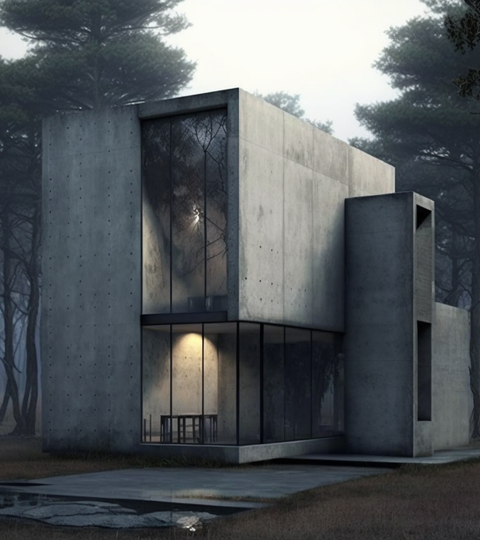Concrete in Modern Architecture: Exploring Japanism and the Concrete Industry Movement
Introduction
Concrete has played a crucial role in modern architecture, transforming the way we build structures and pushing the boundaries of design. The material's versatility and durability make it a popular choice among architects and engineers worldwide. Japanism architecture, with its emphasis on simplicity and minimalism, has had a significant impact on the use of concrete in modern design. In this blog, we will explore the influence of Japanism and the concrete industry movement on modern architecture, focusing on renowned architect Tadao Ando and other notable structures that have embraced these styles.
Japanism Architecture and Concrete
Japanism architecture is a style that has its roots in traditional Japanese design principles, which emphasizes simplicity, natural materials, and a connection to the surrounding environment. This approach to architecture emphasizes the use of materials that complement the natural world, such as wood, paper, and stone. Concrete, as a material, does not fit the traditional Japanism mold, but its use has been embraced by some architects who have incorporated it into their designs while still adhering to the principles of the style.
Tadao Ando is a prominent architect who has used concrete to great effect in his designs. His work often features concrete walls, floors, and ceilings, creating a sense of continuity throughout the structure. Ando's designs also incorporate elements of Japanese culture, such as the use of natural light and water, which help to connect the building with its surroundings. His designs demonstrate that concrete can be used in a way that complements Japanism architecture and creates a unique, modern aesthetic.
The Concrete Industry Movement
The Concrete Industry Movement, also known as Brutalism, emerged in the mid-20th century as a response to the limitations of traditional building materials. This movement sought to use concrete as a way to create large, imposing structures that could withstand the harsh realities of urban life. Brutalist buildings were often characterized by their raw, unfinished surfaces and monolithic shapes.
While the Brutalist movement was criticized for its utilitarian appearance and lack of aesthetic appeal, it did pave the way for architects to experiment with concrete in new and exciting ways. Many architects, including Tadao Ando, have taken inspiration from the Brutalist movement and incorporated elements of its style into their designs. These structures often feature exposed concrete walls and simple, geometric shapes, which create a sense of continuity and harmony with the surrounding environment.
Concrete in Contemporary Architecture
In recent years, concrete has become a popular choice among architects and designers who seek to create modern, sustainable structures. The material's strength and durability make it ideal for use in areas prone to natural disasters, such as earthquakes and hurricanes. Additionally, concrete is a sustainable material that can be produced locally and requires minimal maintenance.
In contemporary architecture, concrete is often used to create visually striking structures that are both functional and aesthetically pleasing. Buildings such as the National Museum of Western Art in Tokyo and the London Aquatics Centre showcase the material's versatility and adaptability, creating a modern aesthetic that is both striking and functional.
Conclusion
In conclusion, concrete has played a crucial role in modern architecture, and its influence is seen in structures worldwide. The use of concrete in Japanism architecture and the Concrete Industry Movement has created a unique aesthetic that celebrates the material's raw beauty while still adhering to the principles of simplicity and minimalism. In contemporary architecture, concrete continues to be a popular choice among architects who seek to create sustainable, functional structures that are both visually striking and durable. With its versatility and durability, it is safe to say that concrete will remain a popular choice among architects and designers for years to come.



0 Comments
There are no comments yet. Be the first one to post one!